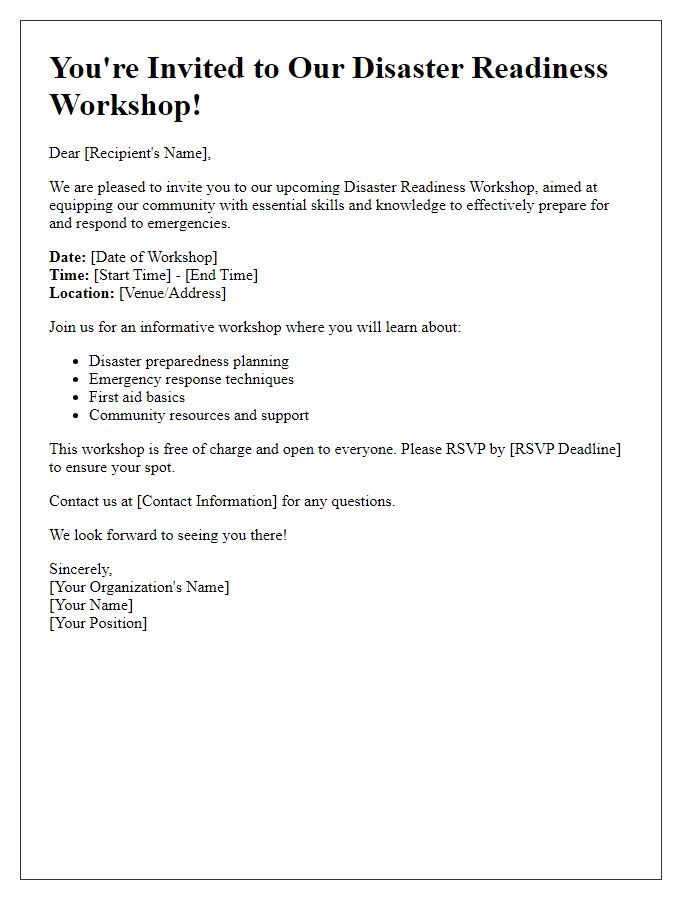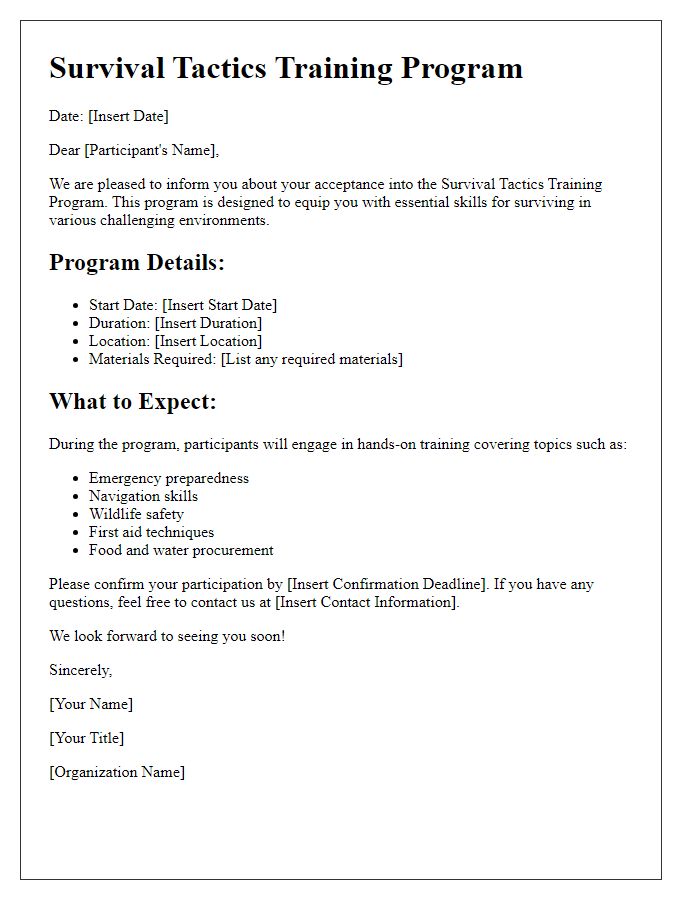Are you ready to take proactive steps in ensuring your safety and the safety of your loved ones during unexpected disasters? Preparing for emergencies can feel overwhelming, but with the right training and resources, you can equip yourself with the essential skills needed to respond effectively. Our upcoming disaster preparedness training will guide you through practical strategies and vital information to navigate any crisis with confidence. Join us as we delve deeper into this life-saving knowledge and discover how you can make a differenceâread on!

Clear Objectives
Effective disaster preparedness training requires clear objectives to ensure a thorough understanding of emergency protocols. Participants must be made aware of key goals, such as enhancing knowledge of local hazards like floods and earthquakes, improving response skills through simulations based on scenarios from events like Hurricane Sandy in 2012, and fostering teamwork among community members during crises. Training sessions should also include practical exercises, focusing on creating emergency kits that adhere to the guidelines from the Federal Emergency Management Agency (FEMA), which advocates for supplies sufficient for at least 72 hours. Measuring success can be achieved through follow-up assessments to reinforce the importance of continuous improvement and readiness within the community.
Key Training Activities
Disaster preparedness training encompasses various key activities designed to equip individuals and organizations with essential skills for effective emergency response. First, participants engage in hands-on simulations, mimicking natural disasters such as hurricanes, earthquakes, or floods, enabling practical understanding of response protocols. Secondly, the training includes comprehensive first aid workshops, where certified instructors provide techniques for treating injuries sustained during a disaster. Thirdly, risk assessment exercises help teams identify potential hazards specific to their geographical areas, such as wildfire risks in California or tornado threats in the Midwest. Additionally, communication drills focus on establishing clear channels for information dissemination, ensuring effective coordination during crises. Finally, creating emergency action plans tailored to specific environments, such as schools or workplaces, reinforces preparedness by outlining roles and responsibilities in the event of a disaster.
Resource Allocation
Effective disaster preparedness training relies heavily on resource allocation, encompassing essential supplies such as non-perishable food, water purification systems, first aid kits, and emergency communication devices. Assessments conducted by organizations like the Federal Emergency Management Agency (FEMA) stress the importance of strategic positioning of these resources, ideally within proximity to high-risk areas, like coastal zones prone to hurricanes or urban locations susceptible to earthquakes. Volunteer training sessions should include simulations of disaster scenarios, utilizing tools such as portable generators to ensure sustainable energy supply during outages. Proper documentation of inventory and distribution plans is critical, ensuring that crucial items reach affected populations promptly, thus enhancing overall community resilience against future disasters.
Schedule and Timeline
Disaster preparedness training requires a well-structured schedule and timeline to ensure comprehensive coverage of essential topics. The training, spanning four days, begins with an introduction to emergency management principles, including the National Incident Management System (NIMS) and community resilience strategies. Day two focuses on disaster response protocols, highlighting case studies from recent events such as Hurricane Katrina (2005) and the 2010 Haiti earthquake, emphasizing lessons learned and best practices. Day three involves hands-on exercises in first aid and CPR, using certified trainers from organizations like the American Red Cross, allowing participants to practice lifesaving skills. The final day culminates in a simulated emergency scenario, where participants apply learned strategies in a controlled environment, fostering teamwork and decision-making under pressure. Key milestones such as pre-training assessments (one week prior) and post-training evaluations (one week following) are integrated into the timeline to measure effectiveness and preparedness levels of all attendees. Additionally, resource allocation for materials, venue logistics, and participant feedback sessions are scheduled to ensure a smooth training experience.
Communication Channels
Effective disaster preparedness training emphasizes the importance of communication channels, crucial in emergencies. Primary channels include mobile phones, radios, and social media platforms like Twitter and Facebook, which can disseminate vital information rapidly. Emergency Alert System (EAS) utilizes local broadcasters to provide alerts and warnings to the public, ensuring timely updates on events such as hurricanes or wildfires. Additionally, community sirens and public address systems serve as visual and auditory signals, allowing for immediate attention. Establishing a communication plan before a disaster occurs, incorporating contact lists and designated meeting places (like community centers or schools), can significantly enhance response efficiency and coordination among local agencies, families, and emergency responders. Regular drills and training sessions ensure preparedness for utilizing these communication methods effectively.













Comments